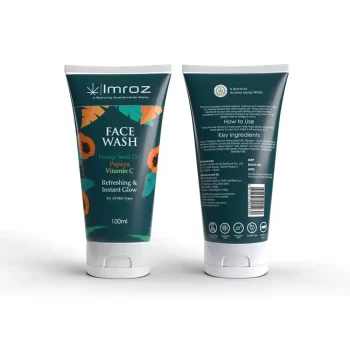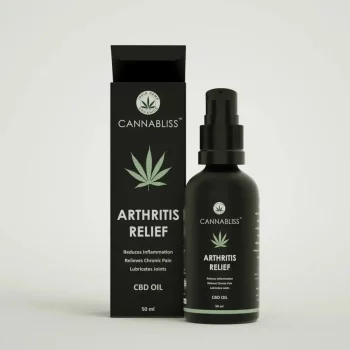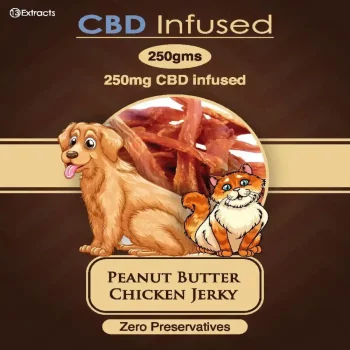Cannabidiol (CBD) is a naturally occurring chemical compound found in the cannabis plant. It belongs to the class of chemical compounds called cannabinoids. It is these cannabinoids that are responsible for the medicinal, therapeutic, and recreational effects of the cannabis plant.
There are quite a number of cannabinoids present in the cannabis plant. However, THC and CBD are the most important and popular ones.
THC (tetrahydrocannabinol) is the chemical compound that is responsible for the feeling of high on smoking marijuana. Marijuana is just one of the many species of cannabis. Since it contains a high amount of THC, it’s primarily used to get high.
Different species of cannabis contain different cannabinoids each with their distinct dedicated function. For example, hemp, another species of cannabis, contains a higher amount of CBD which makes it more of a therapeutic plant than a recreational one.
CBD is a non-intoxicating cannabinoid. This means it does not get you high. In fact, research shows that it may even be able to reduce the psychoactive effects of THC.
What is the source of CBD?
The best source of CBD is the industrial hemp plant. This cannabis species naturally contains high amounts of CBD normally in its leaves, buds, and flowers.
All hemp plants do not contain the same amount of CBD. It varies from plant to plant. So in a general sense, any cannabis plant which is rich in CBD and contains less than 0.3% of THC is considered hemp.
CBD is extracted from hemp using a number of different extraction processes. Each process varies according to multiple parameters such as the solvent and the part(s) of the plant being used as well as the cannabinoid(s) being targeted.
What is the use of CBD?
Research is being conducted every day to discover new therapeutic benefits of CBD. From what we know already, CBD can help in reducing and managing the symptoms of a number of medical conditions.
Even though the research related to CBD is young and fresh, it has been studied to show the following effects:
- Neuroprotective
- Anxiolytic (to reduce anxiety)
- Anti-inflammatory
- Anti-oxidant
- Analgesic (pain-relieving)
- Anti-psychotic
- Anti-depressant
Due to such properties of CBD, it has become quite popular in the treatment of a vast array of medical conditions:
- Epilepsy
- Drug Addiction and Withdrawal
- Anxiety, Depression, and Sleep Disorders
- Parkinson’s, Huntington’s, and Neurodegenerative Diseases
- Chronic Pain and Muscle Spasms
How does CBD work?
For some time now, the popularity of CBD has been on the rise. More and more people are now using CBD because of its many therapeutic benefits. With increasing research, the mysteries around CBD are slowly unfolding. We know about its benefits, but it is also equally important to know how they work.
In this article, we understand the relationship between the cannabinoids in the cannabis plant and the receptors in the human body that make this interaction possible.
Cannabinoids in the Human Body
Cannabinoids (like CBD and THC) are not just present in the cannabis plant. In fact, all vertebrates, including humans, produce cannabinoids. These are known as endocannabinoids, as they are produced within the body.
Phytocannabinoids are cannabinoids that occur naturally in the cannabis plant. The word endocannabinoid is combined of two words endo and cannabinoids.
Endo is short for endogenous, i.e. having an internal cause or origin and cannabinoid is any group of closely related compounds which include cannabinol and the active compound of cannabis.
Just like our nervous and endocrine systems, we have a separate system, known as the Endocannabinoid System (ECS) used by these endocannabinoids to communicate with each other and with other neurotransmitters in the body.
The endocannabinoids found in vertebrates are similar in structure to the phytocannabinoids found in plants. So, when phytocannabinoids enter the human body, they combine with the cannabinoid receptors of the human body to create their effects.
The Endocannabinoid System
The Endocannabinoid System (ECS) is a neurotransmitter system that mainly controls many regular functions and feelings in our body. These include motor control, mood, bone development, fertility and reproduction, sleep, appetite, memory, immune function, and pain reception.
The ECS has 3 major components:
- Endocannabinoids: which are just like the neurons of the ECS. Endocannabinoids are produced everywhere in our body. The two main endocannabinoids are anandamide (involved in memory and appetite) and 2-arachidonoylgylcerol (involved in maintaining emotional and cardiovascular health).
- Cannabinoid Receptors: these are the receptors that the endocannabinoids bond with. These are present in both the central as well as the peripheral nervous system.
- Enzymes: are responsible to break down the endo and phyto- cannabinoids.
Cannabinoid Receptors in the Human Body
The human body has two cannabinoid receptors that we know of:
- CB1: these receptors, even though are present throughout the body, but are majorly found in the brain. CB1 receptors deal with not just all kinds of movement and coordination of our body, but also is responsible for memory, thinking, mood, emotions, and pain.
- CB2: these receptors are commonly found in the immune system. Their primary role is to moderate pain and inflammation in the body.
How does ECS work (without cannabis)?
Before diving deep into the interaction between cannabinoids and ECS, let’s first understand how exactly ECS functions in general.
The endocannabinoid system is just like any other signalling system in the body. But it works in a backward direction.
In a normal signalling system, the neurons in the body communicate with each other and the rest of the body through the use of chemical messages. Typically, a neuron (the presynaptic cell) releases neurotransmitters that travel across the synapse and attach themselves to specific receptors (the postsynaptic cell).
This activates the postsynaptic cell and triggers a set of events that allow the message to be passed along.
But this differs in ECS. Here, the postsynaptic neuron gets activated first. This results in the cannabinoid (i.e. the messenger of the ECS) being activated on-demand from the fat cells that are already present in the postsynaptic neuron. Then they travel back to the presynaptic neuron and attach themselves to the cannabinoid receptors.
What does this mean?
This basically means that the messengers of the ECS i.e. the cannabinoids act on presynaptic cells. So, they work with the available amount instead of generating the actual required amount of neurotransmitters. This affects the way messages are sent, received, and processed in the body.
CBD and the ECS
Cannabinoids have a structure similar to endocannabinoids, which allows them to bond with the CB1 and CB2 receptors in the body. These lead to certain changes in body functions resulting in the effects that CBD is famous for.
Most cannabinoids can bind to both these receptors. THC has a tendency to quickly and directly connect with the CB1 receptors throughout the body. This action suddenly throws the system off balance. This imbalance in the system is what is considered as being high.
On the other hand, there are some cannabinoids such as CBD that have a low affinity to bond with both the CB1 and CB2 receptors. It does not directly trigger either of the receptors but works indirectly.
Since CBD has such a low binding affinity, it works in reverse. It inhibits the breakdown of certain cannabinoids in a particular receptor.
For instance, CBD reduces the action of enzymes that will break down anandamide in the body. This, in turn, will lead to a higher concentration of anandamide. Anandamide has a calming effect on the brain, so a higher concentration allows CBD’s use in relieving stress and anxiety.
Foods and Activities that Boost the ECS
Apart from CBD, a number of factors influence the functions of ECS. These majorly include the food we eat and the activities we do in our daily lives. ECS is responsible for not just life-sustaining but also life-enhancing activities, so even a minute imbalance in the system can lead to many medical conditions.
Given below are a few exercises and food that can be adopted, in addition to CBD, in order to keep the ECS in balance
Running and Workout
Running and/or a good cardio workout results in the release of anandamide in our body which leads to a good feeling after a workout. There is a misconception that this happens because of endorphins. But in reality, it’s because of the endocannabinoid system.
Essential Fatty Acids
Good Omega-3 and Omega-6 fatty acids contain a high amount of precursors (precursors are chemical compounds that help to produce another chemical compound) to endocannabinoids. This means we need to ingest fatty acids so that our body is able to regularly produce endocannabinoids.
The most common sources of essential fatty acids are walnuts, meat, flax seeds, poultry, and sunflower oil. But we have to choose a favourite, it has to be hemp! Hemp seeds and hemp oil both contain omega-6 and Omega-3 in the optimal ratio of 3:1 along with other essential nutrients and minerals.
Hemp seeds and/or oil is a great addition to your diet and everyday life and can play a major role in keeping your endocannabinoid system healthy.
Herbs
Okay, this might come shocking but cannabis is not the only plant that contains cannabinoids. Black Pepper, Turmeric, Echinacea, Liverwort, and Coneflower are also good sources of anandamide. These are easily accessible herbs and I am sure that at least one of them can be found in your kitchen.
Things that Harm the ECS
Now that we are clear on the things which are good for our ECS, it’s time to shed some light on those which are not.
High Pesticide Foods
It’s a common practice to use a high amount of pesticides so that the product looks healthier. But these products are bad not just for ECS but our body in general. Organic foods are your body’s best friend. To keep not just your ECS, but your whole body, in good health, avoid inorganic, chemical-based foods as much as you can.
Alcohol
A little too much of everything is harmful. Consuming alcohol in excess leads to a decline in the sensitivity of CB1 which alters the number of endocannabinoids present in the body.
Chronic Stress
Stress is a part of our life. There is no avoiding it. The general term is to relax and take life by the day. But here, it also considers the other side of stress. For instance, too stressful an exercise can have a negative impact on the ECS.
Now, this doesn’t mean you avoid exercise altogether. Instead, you can combine your everyday exercise with a little bit of meditation, creative processes, and/or structured breathing.
Buy CBD in India
-
India Hemp Organics CannaBliss Arthritis Relief- CBD Oil (100ml)₹1,399.00
-
Zero CBD Blue Dream 15mg Broad Spectrum CBD Gummies (4 Pcs)₹400.00 – ₹7,000.00
-
Neet 300mg Broad Spectrum Vijaya Tailam CBD 30ml₹1,999.00
-
Cure By Design Organic Hemp Balm 2000 mg CBD (50 gms)₹2,500.00
-
Zero CBD Grand Daddy Purple 15mg Broad Spectrum CBD Gummies (4 Pcs)₹400.00 – ₹7,000.00
-
Cure By Design Hemp Oil for Pets – 500mg CBD (30ml)From: ₹2,000.00
-
India Hemp Organics CannaBliss Arthritis Relief- CBD Oil (50ml)₹999.00
-
Broad Spectrum CBD Drops₹1,999.00 – ₹9,999.00
-
Cannabryl Full Spectrum Vijaya Extract For Dogs, 1500mg, CBD-THC Balanced, 30ml₹4,500.00
-
Andyou – Vibe&U Mood Uplift Gummies (200mg CBD + terpenes for good vibes), Orange Flavour, 10 GummiesOriginal price was: ₹1,499.00.₹1,320.00Current price is: ₹1,320.00.
-
Cannavedic CBD Isolate Tincture Icy Mint, 1500mg, 30ml₹4,500.00
-
Cure By Design Hemp Oil for Pets – 500mg CBD (MCT) (30ml)From: ₹2,000.00
-
Cannavedic Pet CBD Oil, 1000mg, 30ml₹3,500.00
-
Wholeleaf Muscle And Joint Pain Rub Oil with 140 gms of Cannabis Leaves, 50 ml₹999.00
-
Noigra Full Spectrum Hemp Oil, 1000mg, Mint, 30mlOriginal price was: ₹5,499.00.₹4,999.00Current price is: ₹4,999.00.
-
13 Extracts CBD Infused Peanut Butter Chicken Jerky₹950.00 – ₹2,800.00







































Your blog is very helpful to gather information about CBD and hemp products. I recommend your blog to many friends. I am very thankful for posting a brief introduction to CBD products. I also started using CBD products, and feeling to many benefits.